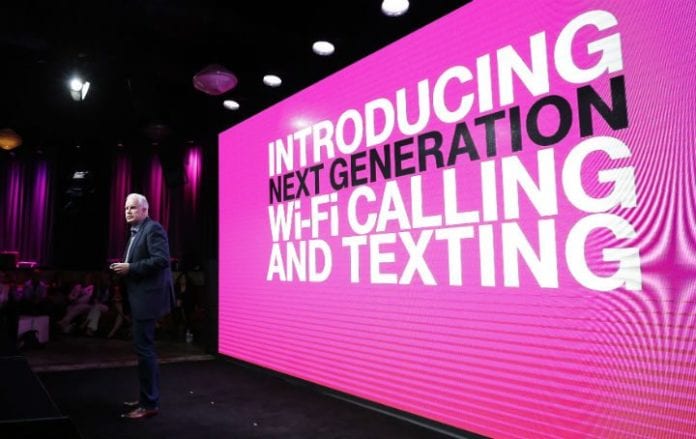On the heels of FCC device certification, T-Mobile US said it would use 20 megahertz of spectrum in the 5 GHz band for LTE-U deployment.
T-Mobile US is getting a jump on using unlicensed spectrum to bolster network performance, announcing it has begun deploying LTE-U technology across its mobile network.
The move comes on the heels of the Federal Communications Commission certifying its first LTE-U devices able to tap unlicensed spectrum in the 5 GHz band to support licensed services. Approved devices include those from T-Mobile US network partners Ericsson and Nokia.
T-Mobile US’ LTE-U plans involve the use of 20 megahertz of unlicensed spectrum in the 5 GHZ band to provide additional LTE capacity for the carrier. The carrier explained the technology can “intelligently tap into and share underutilized unlicensed spectrum without affecting other users on the same band, including those using conventional Wi-Fi.”
“LTE-U constantly seeks the least utilized channels to maximize efficiency and performance for everyone,” the carrier noted. “As demand on the Wi-Fi network increases, LTE-U backs off, and as Wi-Fi demand wanes, customers can tap into that unused capacity for LTE.”
The carrier said it expects LTE-U commercial services and devices to be available this spring, with the additional spectrum support helping T-Mobile US with its plans to provide network speeds of up to one gigabit per second. T-Mobile US earlier this year claimed it witnessed LTE network speeds of 979 megabits per second in a lab environment using a combination of three-carrier aggregation, 4×4 multiple-input/multiple-output antenna technology and 256 quadrature amplitude modulation in an “unreleased handset.”
T-Mobile US initially began testing LTE-U with Qualcomm last May, noting the tests would involve up to 10 small cells and access points, with mobile units that were receive-only at 5 GHz, but able to transmit on LTE Band 4. Qualcomm had previously established a test regime with Verizon Wireless early last year.
The use of LTE-U has been somewhat controversial as proponents of unlicensed spectrum raised concerns over licensed operators tapping into spectrum initially set aside for use by diverse devices. Those concerns were addressed late last year following release of a test plan by the Wi-Fi Alliance.
Although based in LTE releases, LTE-U includes proprietary approaches to the coexistence mechanism between LTE and Wi-Fi. License-assisted access, which is another technology set to use unlicensed spectrum to support licensed services, requires a “listen-before-talk” approach to Wi-Fi coexistence with LTE and was established through the Third Generation Partnership Project standardization process. LAA is required in Europe, Japan and other regions.
Bored? Why not follow me on Twitter.

